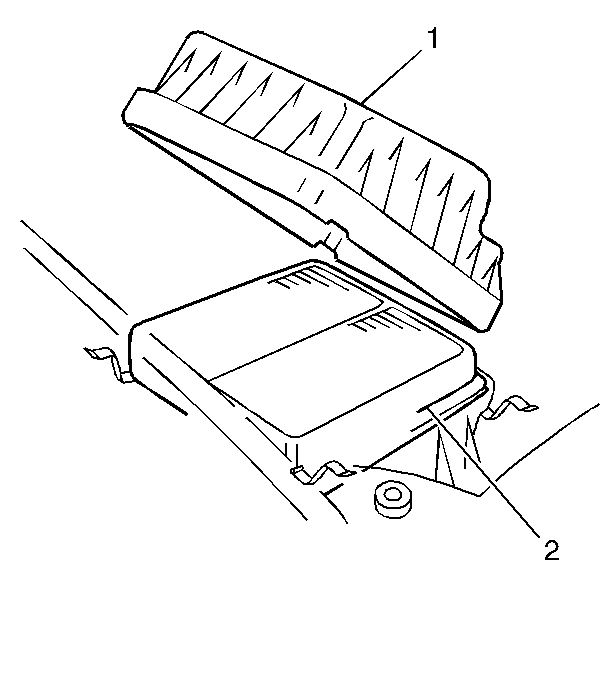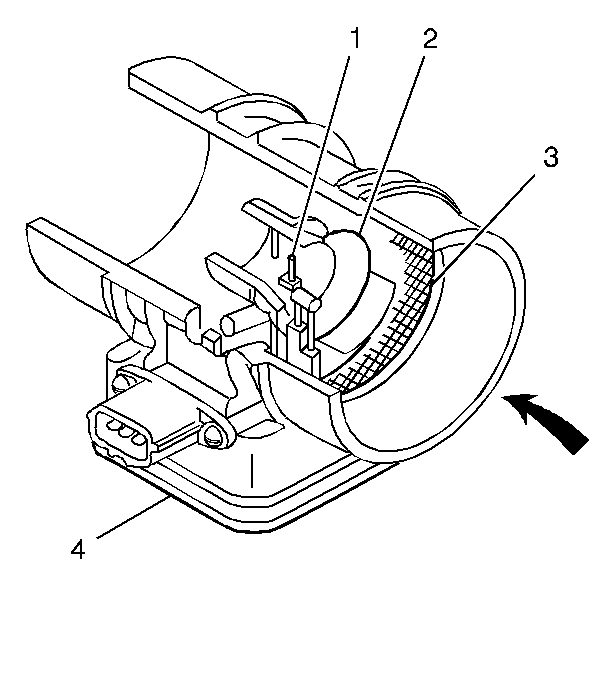The air induction system draws outside air into the combustion
chamber. The intake air flows through a forward mounted duct and into the
air cleaner assembly. The intake air passes out of the air cleaner assembly,
through the mass air flow sensor and inlet duct, to the throttle body.
The throttle body houses a throttle valve that controls the volume of
air entering the intake manifold. A metered amount of air also enters
the intake manifold through the idle air bypass passage in
the idle air control (IAC) valve attached to the throttle body. From the
throttle body the intake air flows into the plenum chamber of the intake
manifold and is then distributed to each cylinder through an intake manifold
runner. The intake air is mixed with fuel from the fuel injectors at the
entrance to the combustion chamber.

An air filter element (2) is incorporated into the air cleaner assembly
(1) in order to prevent dirt from entering the engine. The following components
are directly or indirectly a part of the air supply system.
Mass Air Flow (MAF) Sensor

The mass air flow (MAF)
sensor consists of a heat resistor element (1), a metering duct (2), an air
straightening screen (3), a body and control circuit board (4). This
MAF sensor is of the thermal control type. The heat resistor is
cooled off by the air entering the MAF sensor. The control circuit
maintains the heat resistor temperature within a predetermined range.
When the amount of air entering the sensor increases, the signal
created by the sensor and sent to the PCM, also increases. When
the air flow decreases, so does the signal current to the PCM. The
MAF sensor is located in the air intake duct between the throttle
body and the air cleaner.
The mass air flow (MAF) sensor measures the amount of air which passes
through it in a given amount of time. The powertrain control module (PCM)
uses this information in order to determine the operating requirements
of the engine and control fuel delivery. A large quantity of air
movement indicates acceleration, while a small quantity indicates
deceleration or idle.
Throttle Body Assembly




